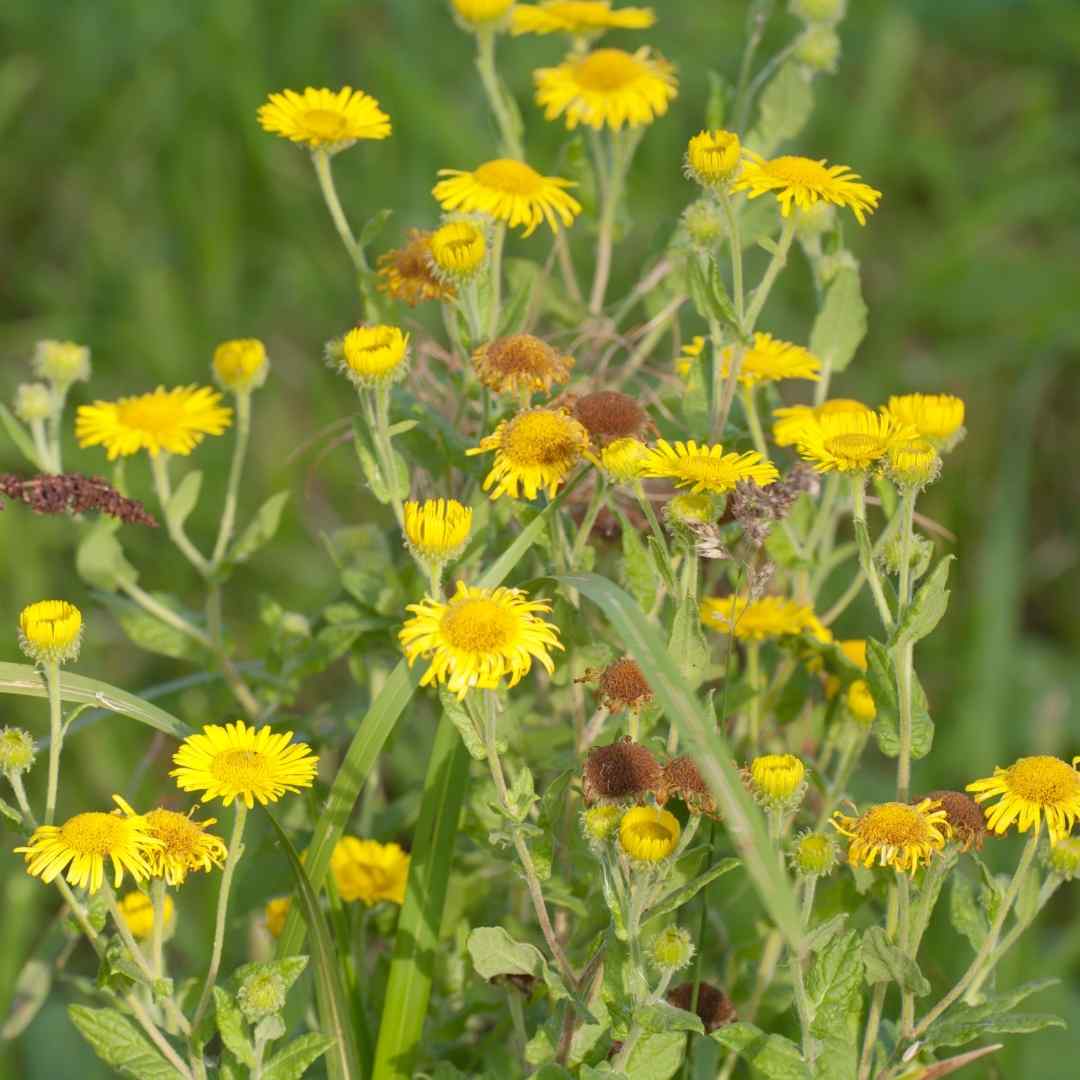Foraging Gozo. Sea Beet.
Sea Beet is found growing wild on Gozo and is a great alternative to chard.

Firstly – have you ever heard of Hairy Fleabane? This yellow wildflower adds colour to Gozo’s landscape all year round and can be found growing in most terrains. Read on to explore the benefits of this abundant weed.


Botanical Name: Conyza bonariensis Synonyms: Conyza ambigua, Conyza crispa, Erigeron bonariensis, Erigeron crispus, Erigeron floribundus Family Name: Asteraceae Maltese Name: Żagħżigħa selvaġġa Common Names: Argentine fleabane, Butterweed, Flax-Leaved Fleabane, Fleawort, Hairy fleabane, Rough conyza, Meaning of the Name: Conyza, konops from Greek, ’a gnat’, and used by Pliny as a name for some kind of a fleabane, or konis from Greek, ’dust’, its powder being used to kill fleas, bonariensis, named after Buenos Aires, Argentina. Erigeron, from Greek, er, spring; geron, an old man, suggested by the hoariness of some vernal species, crispus from Latin, finely waved; closely curled.
Hairy fleabane is a common summer annual or biennial broadleaf living in unmanaged areas and cultivated fields. It usually grows up to 20-75cm in height. Flowers are numerous and the flower head looks like a flower bud. They have distinct bell-shaped leaves and the inside of each is white sometimes tinged purple or red. The cypsela (fruit) is a linear-shaped seed and the whole thing is covered in hairs, hence the name! On Gozo, it flowers all year around.


Main Active Constituents: alkaloids, anthocyanin pigments, campesterol, choline, cyanin, cyclopropenoids, diterpene, ergosterol, essential oil, glycoside, β-sitosterol, flavonoids, flavonoid glycosides, minerals (calcium, phosphorus, potassium), organic acids, stigmasterol, tannins, taraxeryl acetate, terpineol.
Hairy fleabane has only limited uses, although it is cultivated as a medicinal plant in some parts of the world, possibly for the noted antimicrobial effects. It is particularly good in cases of ulcers and diuretic healing. The infusion of fleabane leaves and flowers is used as a liver decongestant, and a liver protector, against venereal diseases (gonorrhoea) and urinary tract infections.
The infusion is used as a diuretic in diseases of the genitor-urinary and urethral washings. The decoction of the whole plant is used as purifying ant rheumatic, primarily to eliminate uric acid. In the South Asian traditional system of medicine, various parts of the plant are being used in a variety of ailments.
Leaves are used as laxative, root is used in diarrhoea, cough, while flowers are considered an aphrodisiac, emollient, and used in gastrointestinal problems including diarrhoea. The crude extract of the plants used in constipation and diarrhoea. Phytochemical studies of Conyza bonariensis revealed the presence of several bioactive constituents. The plant has also been evaluated pharmacologically for the presence of anticonvulsant, antitumor, hypoglycaemic, and estrogenic activities

Precautions: Skin contact with Hairy Fleabane can cause dermatitis in some people.
Preparation:
Keen to own the book? Click here to purchase the e-version of Weeds for Health on Gozo.

Author : Heléna Szöllősy. Editor: GITH
Helena is an expert on the medicinal properties of plants having trained in Herbal Medicine and Naturopathy, specialising in Phytotherapy including Homeopathy, Aromatherapy, Apitherapy and Bach Flower Therapy.
Sea Beet is found growing wild on Gozo and is a great alternative to chard.
Did you know Wild Asparagus Is really good for your skin? You can find it on Gozo all year round.
Wild Artichokes Are found growing wild on Gozo and super healthy for the liver.
Small White Clover, found growing wild on Gozo and known to be lucky makes a great pudding!